Size Guide
Choosing the right sliding pocket door
Sizing a sliding pocket door system is very easy:
Step 1: measure the available space
Step 2: choose the standard pocket door frame size that will fit the space
Step 3: if you need a wider passage width, consider a couple of alternative options
Here below, the ECLISSE Single model is used as an example.

Step 1
Measure the overall wall space available.
The pocket door frame needs to fit within this space.
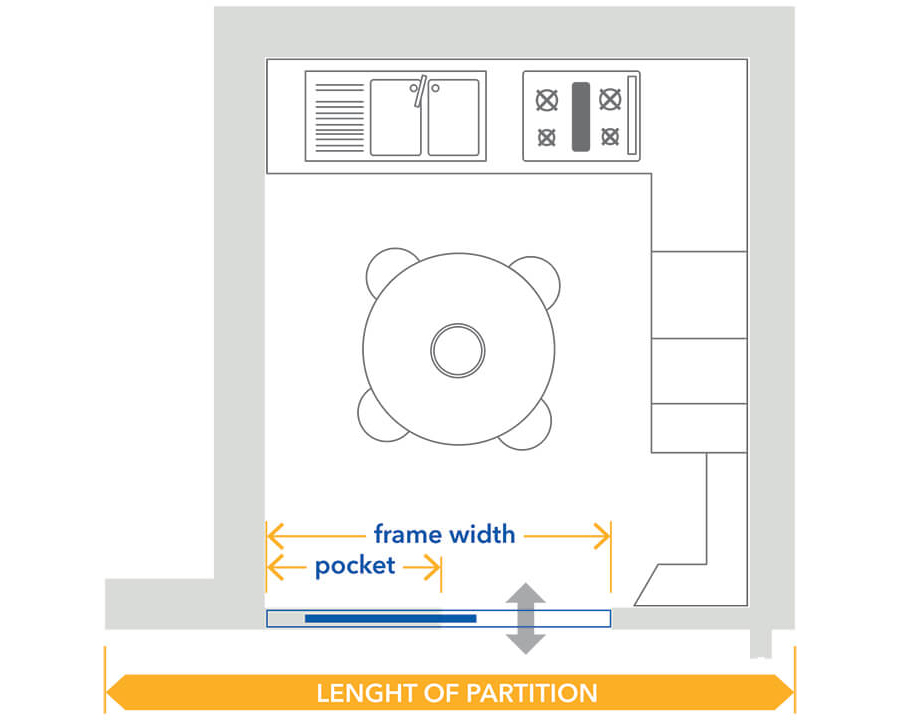
Step 2
Look at the sizing table and decide which frame size will fit in the available space and which door size you will have with that frame.
E.g.
Overall wall space in length and height of the partition: 1800x2300 mm
Suitable door panel sizes: if you are willing to use the largest standard door panel to provide the largest possible passage width, from the size chart of the ECLISSE Single model you can see that the widest frame size fitting the space is 1715x2190 mm, which will provide a max. passage size of 800x2100 mm and will require a 815÷835x2110 mm door panel to fit the pocket door system.
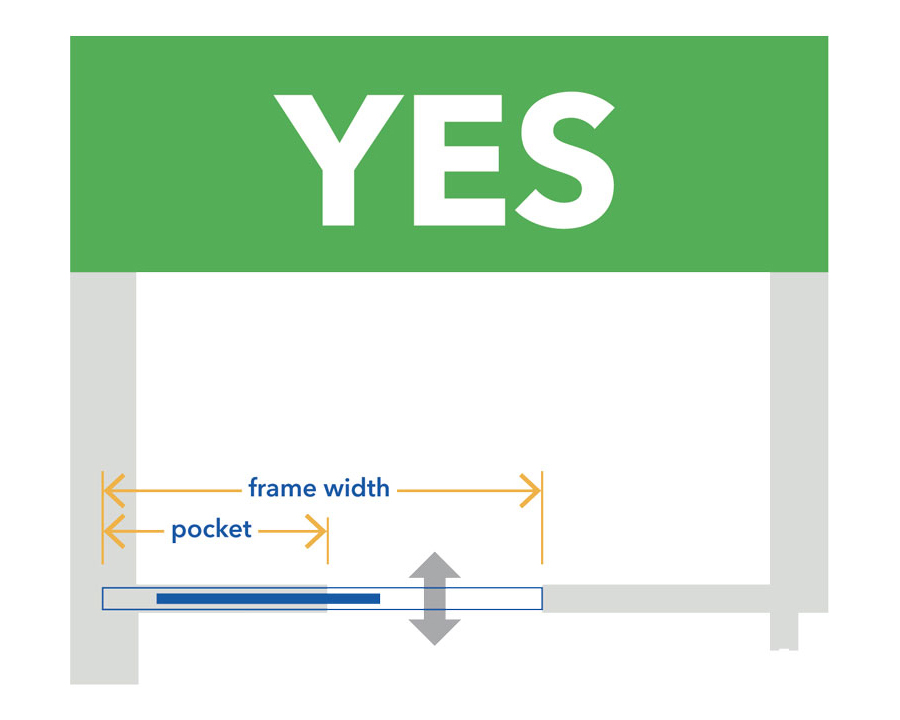
Step 3
If you want a larger passage width or door size than those provided by the fitting frame size, you may consider a couple of different options.

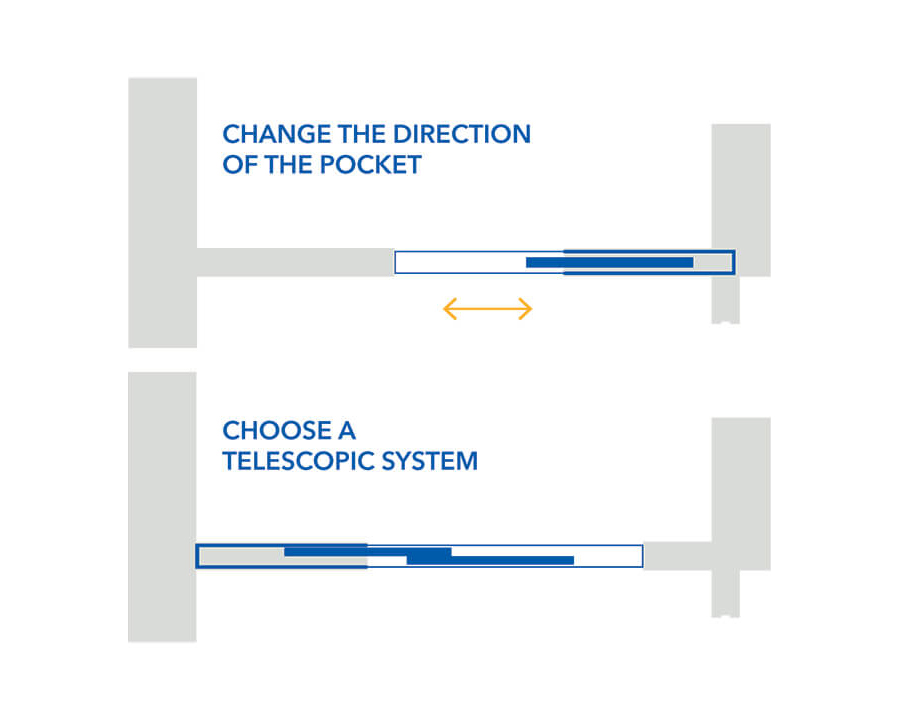
Alternative solutions
Consider switching the side that hosts the pocket, if you want to keep the doorway where you planned to have it, but you don't have enough space on the side you chose in the first place.
Or, in order to have a larger passage width a single telescopic system could be you best choice. Check the ECLISSE Telescopic model page!
Stud walls, masonry walls and finished wall thickness
This section is meant to explain the differences between the many sizes of studworks and brick walls around the world. Stud walls are made of wooden or steel studwork with plasterboard attached.

WOODEN STUDWORK
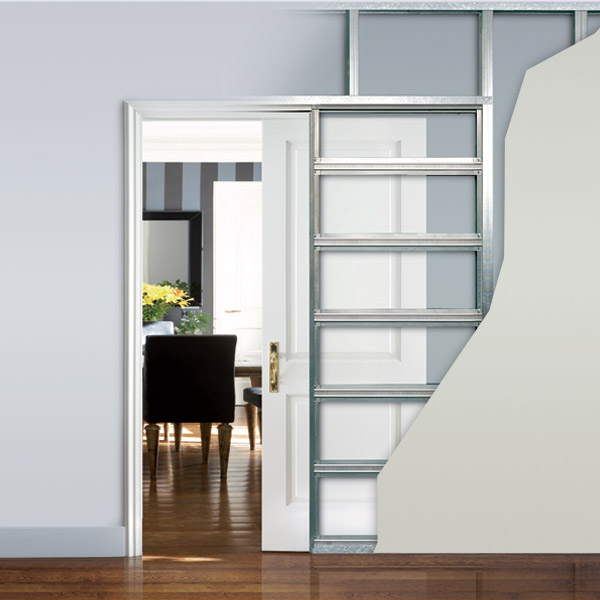
STEEL STUDWORK
The steel framework takes the place of the studwork and the doors slide along the upper track. ECLISSE pockets can be installed on both steel or wooden studwork.
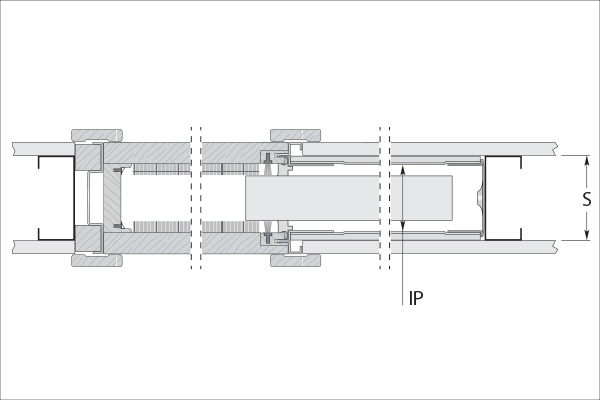
European wood/metal studwork for stud wall
| Studwork (S) | Internal Passage (IP) |
| 50 mm | 50 mm |
| 70 mm | 54 mm |
| 75 mm | 58 mm |
| 95 mm | 79 mm |
| 100 mm | 83 mm |
Adding the plasterboard to the studwork you will reach the required finished wall thickness. Here is an example (considering the plasterboard is nearly always 12.5 mm thick):
- 75 mm stud work plus 12.5 mm plasterboard on each side gives a finished wall thickness of 100 mm
- 100 mm stud work plus 12.5 mm plasterboard on each side gives a finished wall thickness of 125 mm
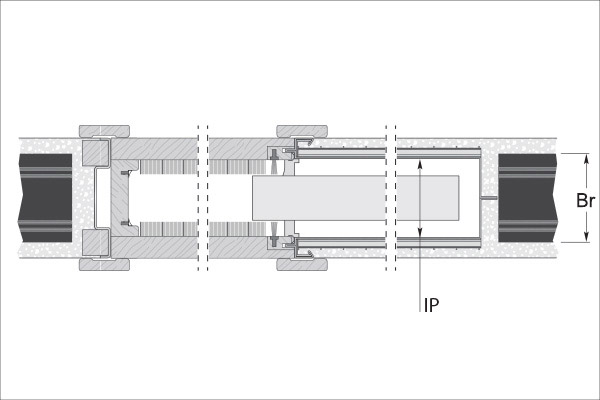
European brick structure for solid wall
| Brick (Br) | Internal Passage (IP) |
| 60 mm | 54 mm |
| 80 mm | 72 mm |
| 100 mm | 89 mm |
| 120 mm | 114 mm |
